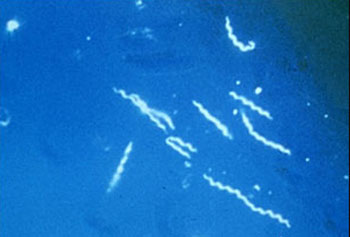Transcriptome Analysis Reveals Pattern of Gene Expression with Diagnostic Potential for Lyme Disease
By LabMedica International staff writers
Posted on 22 Feb 2016
A distinctive gene expression pattern exists during a three week period following infection with the bacterium Borrelia burgdorferi that enables definitive diagnosis of Lyme disease.Posted on 22 Feb 2016
Lyme disease is the most common tick-borne infection in the United States, and some patients report lingering symptoms lasting months to years despite antibiotic treatment. To better understand the role of the human host response in acute Lyme disease and the development of post-treatment symptoms, investigators at the University of California, San Francisco (USA) and John Hopkins University (Baltimore, MD, USA), conducted a longitudinal gene expression (transcriptome) study of patients enrolled at the time of diagnosis and followed up for up to six months after treatment.

Image: Lyme disease is caused by the spirochete bacterium Borrelia burgdorferi. The photomicrograph shows the typical corkscrew appearance of the spirochete (Photo courtesy of the CDC - US Centers for Disease Control and Prevention).
The investigators used the RNA-seq next-generation sequencing technique to define the pattern of gene expression (the transcriptome) in the white blood cells of 29 Lyme disease patients before and after they received a three-week course of antibiotic treatment and also six months later. A group of 13 matched control subjects were tested in parallel with the Lyme disease patients.
Results revealed that the differential gene expression signature of Lyme disease following the acute phase of infection persisted for at least three weeks and had fewer than 44% differentially expressed genes (DEGs) in common with other infectious or noninfectious syndromes. Early Lyme disease prior to antibiotic therapy was characterized by marked upregulation of Toll-like receptor signaling but lack of activation of the inflammatory T-cell apoptotic and B-cell developmental pathways seen in other acute infectious syndromes.
Six months after completion of therapy, Lyme disease patients were found to have 31% to 60% of their pathways in common with three different immune-mediated chronic diseases: systematic lupus erythematosus, rheumatoid arthritis, and chronic fatigue syndrome. No differential gene expression signature was observed between Lyme disease patients with resolved illness to those with persistent symptoms at six months post-treatment.
"Improved diagnostics are urgently needed for Lyme disease," said senior author Dr. Charles Chiu, associate professor of laboratory medicine at the University of California, San Francisco. "The tick that transmits Lyme also harbors many other pathogens, and early diagnosis is critical in guiding appropriate treatment and preventing later complications of the illness."
"To our knowledge, this study is the first to document changes in gene expression occurring even after a bacterial infection has been treated with appropriate antibiotics," said contributing author Dr. John Aucott, assistant professor of medicine at Johns Hopkins University.
The study was published in the February 12, 2016, online edition of the journal mBio.
Related Links:
University of California, San Francisco
John Hopkins University













